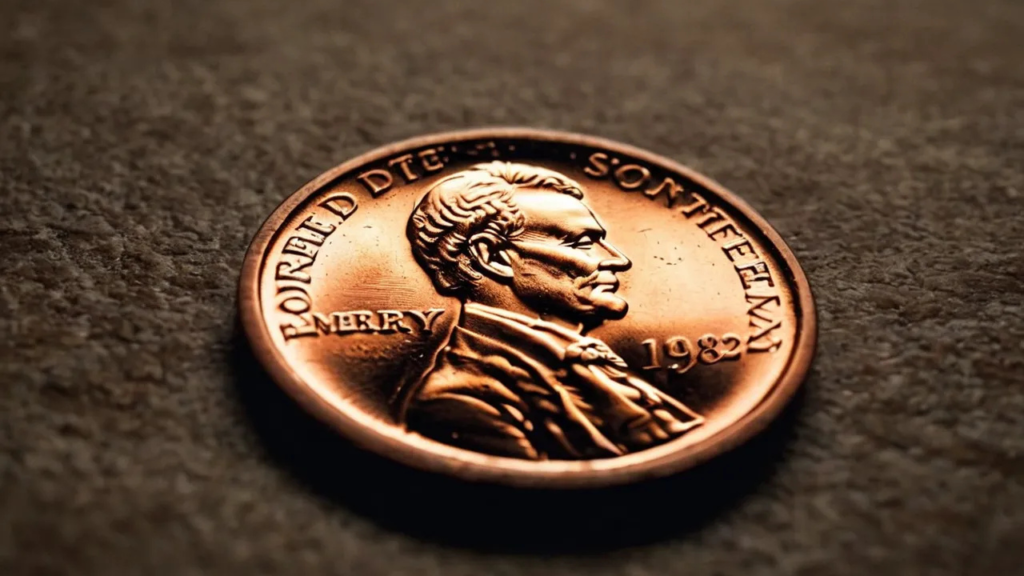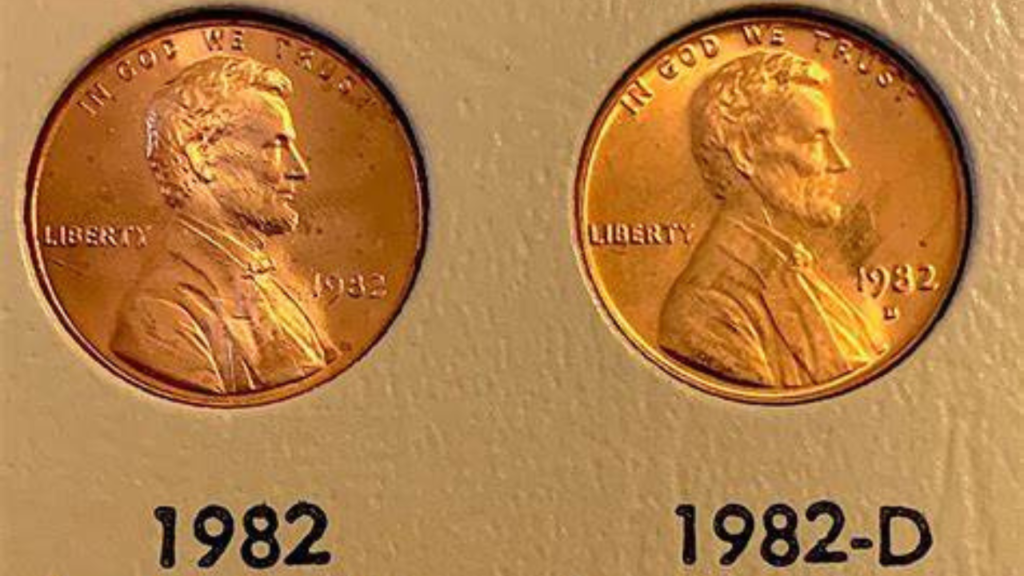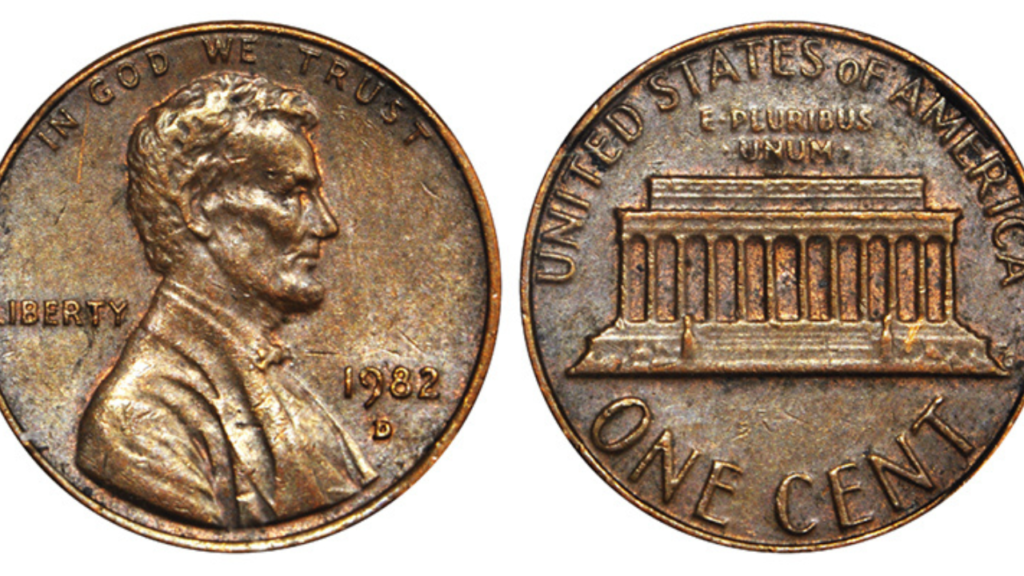1982-D Small Date Copper Penny: Imagine stumbling across a rare coin worth $18,800 sitting quietly in your coin jar or antique piggy bank. That’s exactly what took place to a fortunate collector who observed the ultra-rare 1982-D Small Date Copper Penny—a coin so scarce that best two showed specimens exist. While maximum pennies are handiest worth one cent, this one can be your ticket to a small fortune. But how will you tell when you have this hidden gem for your pocket alternate or coin series?
In this newsletter, we’ll walk you thru the whole thing you want to understand approximately the 1982-D Small Date Copper Penny, consisting of what makes it so treasured, how to pick out it step-via-step, and what movements to take if you assume you’ve located one. Whether you’re a casual coin collector, a records buff, or just a person hoping to strike gold in spare trade, this pleasant, easy-to-recognize manual will assist you navigate the fascinating international of numismatics.
1982-D Small Date Copper Penny
| Feature | Details |
|---|---|
| Rare Coin | 1982-D Small Date Copper Lincoln Penny |
| Estimated Value | Up to $18,800 (sold at auction in 2016) |
| Composition | 95% Copper (should be zinc for that date/mint combo) |
| Weight | Approx. 3.11 grams (vs. 2.5g for common zinc coins) |
| Discovered Specimens | Only two known as of now |
| Where to Check | Coin jars, old piggy banks, inherited collections, pocket change |
| Official Info | U.S. Mint |
The 1982-D Small Date Copper Penny is a coin collector’s dream—extraordinarily rare, noticeably treasured, and hiding in simple sight. With handiest established specimens, it’s a modern-day marvel of numismatic records. By studying a way to perceive it, weighing your coins carefully, and getting professional verification, you can turn a easy penny into a lifestyles-changing discovery.

So next time you’re sorting via your spare exchange or inherited coin series, take a better look. That normal-looking penny would possibly simply be worth $18,800 or extra.
Why Is the 1982-D Small Date Copper Penny So Valuable?
To understand why this humble penny ought to fetch almost $20,000, it facilitates to dive into a bit of U.S. Coinage history. In 1982, the U.S. Mint made a prime alternate: it switched the composition of pennies from 95% copper to a zinc middle covered with a thin layer of copper. This became completed to lessen costs, as copper had grow to be too expensive to preserve the use of for everyday cash.
At the equal time, the Mint used two exclusive kinds of dates on pennies that yr—Large Date and Small Date—making 1982 one of the maximum complex years in Lincoln cent records. Since both zinc and copper versions were made and each had Large and Small Date styles, there are seven important sorts of 1982 pennies. But handiest one is a chief outlier: the 1982-D Small Date Copper Penny.
Here’s what makes it so particular:
- The Denver Mint (denoted by way of the “D” mintmark) become best speculated to produce zinc Small Date pennies.
- But someway, a few leftover copper planchets (coin blanks) were by chance used.
- This mishap brought about a minting errors of epic rarity.
Only two specimens were officially certified and confirmed, and both were determined decades after 1982. That’s what offers this penny its jaw-dropping value.
How to Identify the 1982-D Small Date Copper Penny
If you want to test your own cash to peer in case you is probably retaining this treasure, right here are three easy steps to assist become aware of it:
1.Examine the Date and Mint Mark
Look on the front (obverse) of the coin. It should have:
- The year 1982
- A small “D” under the 12 months (approach minted in Denver)
- The Small Date layout, which is slightly one of a kind from the Large Date (more on that subsequent)
2. Identify the Small Date Design
This is in which the details depend. Here’s how to tell the Small Date aside:
- The quantity “8” has a smaller top loop than the lowest one
- The number “2” has a curved diagonal stroke (now not a instantly one like within the Large Date)
- The entire date seems thinner and less bold as compared to the Large Date
You can compare your coin to facet-by way of-aspect pics on relied on websites like PCGS or NGC.
3. Weigh the Coin Accurately
This step is crucial. Use a digital scale that measures to the hundredth of a gram (0.01g).
- A copper penny weighs approximately three.11 grams
- A zinc penny weighs about 2.Five grams
If your 1982-D Small Date penny weighs close to a few.Eleven grams, you could have the extraordinarily uncommon copper version.

What to Do If You Think You’ve Found One
Think you’ve determined a 1982-D Small Date Copper Penny? Here’s what you should do subsequent:
Step 1: Do Not Clean the Coin
Cleaning can also lessen its price significantly. Collectors and grading companies prefer cash in their authentic, unaltered situation—even supposing they’re grimy or discolored.
Step 2: Verify the Details Again
Double-check the layout features and re-weigh the coin to verify:
- Small Date style?
- “D” Mintmark?
- Weight round three.Eleven grams?
Step 3: Submit It for Professional Grading
You’ll need an professional to confirm your locate. Contact this sort of top grading offerings:
- Professional Coin Grading Service (PCGS)
- Numismatic Guaranty Company (NGC)
They’ll take a look at the coin’s metal composition, verify the date style, and assign an respectable grade.
Step 4: Explore Selling Options
Once graded, your coin can be listed in auction homes like Heritage Auctions or Stack’s Bowers. You can also listing it privately through collector networks. The first established coin offered for $18,800, and the second fetched over $10,000. Prices may want to move even better as call for grows.
Why Is This Coin So Incredibly Rare?
Minting mistakes manifest greater frequently than you observed, however the 1982-D Small Date Copper Penny is on some other degree of shortage. During the transition in 1982, the Denver Mint had already switched to zinc planchets. Any remaining copper blanks had been presupposed to be removed and recycled.
However, due to human oversight or system error, some copper planchets were left at the back of and by accident used for a batch of Small Date pennies on the Denver Mint. Since copper and zinc look similar, those mistakes weren’t immediately noticed.
Most of the coins from this mistake were probable melted down or misplaced to time—making any surviving pieces well worth a fortune today.

Other Rare Lincoln Pennies You Should Know About
The 1982-D Small Date Copper Penny isn’t the only Lincoln cent that’s well worth far extra than face fee. Here are some extra precious pennies to look for:
- 1943 Copper Penny: These had been mistakenly made from copper after they have to’ve been metal. Worth as much as $250,000.
- 1955 Double Die Penny: Features robust doubling of the date and letters. Worth over $1,000 in decent circumstance.
- 1972 Double Die Obverse: Another doubling error, frequently well worth loads relying on grade.
- 1992 Close AM Penny: Rare reverse design with letters “A” and “M” near collectively. Value tiers from $1,000 to $five,000 .
If you enjoy coin searching, it’s sincerely really worth getting to know these varieties. You in no way know what might be hiding in simple sight!.
FAQs:
How many 1982-D Small Date Copper Pennies exist?
Only two confirmed examples have been found as of 2024. That makes this coin one of the rarest modern Lincoln cents.
How can I tell if my 1982-D penny is copper or zinc?
Use a precise digital scale. If it weighs around 3.11 grams, it’s likely copper. If it weighs around 2.5 grams, it’s zinc.
Is it worth submitting to a grading service?
Yes. Grading helps authenticate your find and can increase its value significantly, especially if it’s truly rare.
Where can I get reliable coin information?
Visit trusted sources like PCGS, NGC, and the U.S. Mint for coin facts and historical context.
Are there other valuable coins from 1982?
Yes. There are seven varieties from 1982, and while most are common, 1982 Small Date Copper (no mint mark) and other minting oddities may still carry premium value depending on condition.









